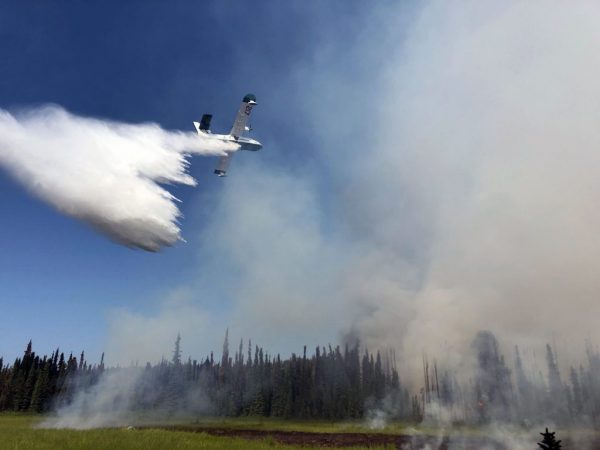
Alaskans saw huge impacts from wildfires last summer that required thousands of Outside firefighters to come to the state. But this year, Alaska-based fire managers are expecting less help from out of state due to the coronavirus pandemic.
That’s both because of difficulties with interstate travel and because many of the emergency responders are needed to address the pandemic in their home states.
Norm MacDonald, chief of fire and aviation at the state Division of Forestry, said he’s heard there could be 30 percent fewer resources available to Alaska, including personnel like firefighters and dispatchers, but also aircraft and other equipment.
Get the latest coverage of the coronavirus in Alaska
“I mean, it’s something that as we work through the season, we’ll keep track of what’s available and resources that are out there,” MacDonald said. “But I think movement of resources and people and equipment from state to state is something that is just a national concern right now, and with a lot of the restrictions and things that are out there, we’re working through that.”
To cut down on human-caused fires and limit the burden on in-state first-responders during the pandemic, Alaska fire officials are instituting a statewide burn ban May 1.
Meanwhile, MacDonald says Alaska-based fire crews have quarantined together like family units, limiting exposure to anyone outside the group.
“Knowing that they’re gonna have to work close together on a fire, knowing they’re gonna have to be at times within six feet, knowing that sometimes a mask is not you know, going to work if you’re in a situation where you’re working hard and breathing hard,” he said.
So fire officials and land managers are looking at where to focus what will likely be limited resources. Because their highest-priority fires are the ones near communities, and the majority of those fires are human caused, they are also asking Alaskans to change their behavior to be extra fire safe.
“If we can, as Alaskans, take those efforts, that’ll buy us more than anything we can do as far as moving resources around,” MacDonald said. “We do know all of our first responders are already overtaxed and busy. So whatever we can do to reduce that, that workload on those groups, we need to do.”
While good snow cover this spring across much of the state will help reduce the number of early-season fires, MacDonald said, the summer could still progress to conditions seen in 2019, which set records for heat and dryness, and ranked among years with the most acres burned.
Fire managers are already monitoring holdovers from last year, including known hot spots within the Kenai Peninsula’s Swan Lake Fire, which burned more than 160,000 acres, and an underground fire still smoldering in a layer of peat near Red Shirt Lake in Willow that survived the winter.
Casey Grove is host of Alaska News Nightly, a general assignment reporter and an editor at Alaska Public Media. Reach him at cgrove@alaskapublic.org. Read more about Casey here.





